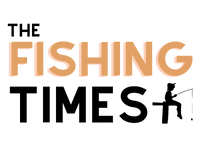Have you ever stood knee-deep in a coastal marsh, wondering why redfish seem to prefer mocking your best efforts rather than biting your bait? It’s a scene many anglers know all too well. Surprisingly, redfish, with their striking bronze scales, are as elusive as they are enticing. Whether you’re just starting or have cast your line a thousand times, understanding how to fish for redfish in these intricate environments matters. This blog is your go-to guide for unravelling the mysteries of coastal marshes, offering insights to refine your techniques, boost your success, and elevate your outdoor adventures.
How do You Fish for Redfish in Marshes?
“How to Fish for Redfish in Coastal Marshes” refers to the practice of catching redfish, a popular saltwater sport fish, in shallow estuarine environments filled with grasses and mudflats. This technique has evolved from traditional fishing methods used by coastal communities to target redfish in their natural habitats. It’s worth knowing because redfish are known for their powerful runs and offer a challenge that enchants anglers of all levels. Fishing in coastal marshes also immerses you in rich, diverse ecosystems, enhancing your outdoor experience and deepening your connection with nature. Understanding these techniques elevates your skills and increases your chances of landing impressive catches, providing both excitement and a sense of accomplishment.The importance of coastal marsh redfish fishing explained.
Fishing for redfish in coastal marshes is more than just a thrilling adventure; it’s a rich learning opportunity that fits right into the broader lifestyle of fishing enthusiasts who love honing their skills and respecting nature. Here are some benefits to consider:- Boost Your Skills: While angling for redfish, you’ll get to learn a variety of techniques like casting under mangroves or pin-hooking in tight spots. These skills translate well to other types of fishing, making you a more versatile angler.
- Enjoy the Scenic Beauty: Coastal marshes are stunning! As you fish, you’ll immerse yourself in this natural beauty, making every trip a mental getaway. The picturesque environment offers a peaceful retreat, enhancing your connection to the outdoors.
- Sustainability Awareness: When you learn about redfish behaviour, you also pick up tips on responsible fishing practices, which is crucial for conservation. You’re not just catching fish; you’re contributing to a sustainable future of fishing, keeping the ecosystem balanced.
- Improved Safety Skills: Navigating marshy areas requires understanding tidal influences and water conditions. By being more aware of your surroundings, you become a safer, more informed fisherman.
- Bonding Experience: Whether you’re fishing solo or with friends and family, it’s a bonding experience. Sharing the knowledge and excitement of redfish angling brings people closer, enriching the social aspect of your fishing lifestyle.
Master Coastal Marsh Fishing for Redfish: Simple Steps for Success
1. Scout the Environment: Begin by exploring the coastal marshes to pinpoint where the redfish are. They often gravitate towards grassy areas and shallow waters. Pay attention to their movement patterns and times when they’re most active.2. Select the Right Gear: Equip yourself with a medium-weight rod and a reel that can handle the vigor of redfish. Opt for spoons or soft plastic lures that mimic their natural prey. Remember, this is key: match your gear with the fish’s environment to increase your chances.
3. Practice Casting Techniques: Focus on your casting technique by maintaining a smooth and controlled motion. Target your cast near grassy sections or along the marsh’s edges. Many anglers miss their spots due to poor casting, so practice until it feels second nature.
4. Patiently Work the Lure: Slowly retrieve your lure, allowing it to mimic the natural movement of prey, pausing intermittently. Patience is crucial here. A common mistake is retrieving too quickly, which can spook the fish. Keep a steady rhythm, and you’ll improve your chances dramatically.
Perfect Rod for Redfish in Coastal Marshes
| Gear | Purpose | Skill Level | Price Range |
|---|---|---|---|
| Spinning Rod | Light casting, versatile use in marshes | Beginner to Intermediate | £30 – £100 |
| Baitcasting Rod | Precision casting, handles heavier lures | Intermediate to Advanced | £50 – £150 |
| Fluorocarbon Leader | Invisible under water, increases catch rate | All Levels | £5 – £20 |
| Topwater Lures | Surface action, attracts fish in shallow waters | Intermediate | £5 – £15 |
| Jig Heads | Bottom fishing, adaptable to diverse conditions | All Levels | £10 – £25 |
| Standout: Soft Plastic Lures | Imitates natural prey, versatile and durable | Beginner to Advanced | £10 – £30 |
Real-Life Insights: Mastering Redfish in Coastal Marshes
Last summer, my mate Jack and I decided to try our luck with redfish in the coastal marshes. We were armed with the tips from “How to Fish for Redfish in Coastal Marshes,” and our excitement was palpable. Setting off early in a rented skiff, we navigated through winding inlets and perched ourselves near a grassy point that looked prime for some action. Applying the advice from the guide, we chose gold spoon lures, perfect for the clear dawn light. As we cast our lines, we embraced the rhythm of the ebb and flow, noticing how crucial it was to follow the tips on tide timings. Suddenly, Jack let out a triumphant yell. His line took on a life of its own, bending fiercely. After a solid five minutes of battle, he reeled in the most stunning redfish, its scales shimmering in the morning sun. We cheered and learned that patience, lure choice, and timing were key. This experience left us with not just a catch but a deeper respect for both the fish and the marshes’ delicate ecosystem.Preserve Redfish Habitats: Sustainable Fishing Practices
- One of the highlights of ‘How to Fish for Redfish in Coastal Marshes’ is its focus on sustainability, ensuring we keep the ecosystems healthy. By practising catch and release, anglers can minimise the impact on the redfish population, helping maintain the balance of the marine environment.
- Always use circle hooks; they are more fish-friendly, reducing injury and increasing the chances of survival when releasing fish.
- Be mindful of your surroundings and the local wildlife. Avoid disrupting their natural habitats by cleaning up after yourself and leaving no trace behind.
- When navigating through marsh areas, try to use non-motorised boats like kayaks or canoes to minimise damage to the sensitive ecosystems.
- Familiarise yourself with local fishing regulations to understand seasonal restrictions and size limits. This helps protect fish stocks and ensures future generations can enjoy a thriving habitat.
- Consider the use of biodegradable fishing lines, which break down faster and prevent harm to marine life.












